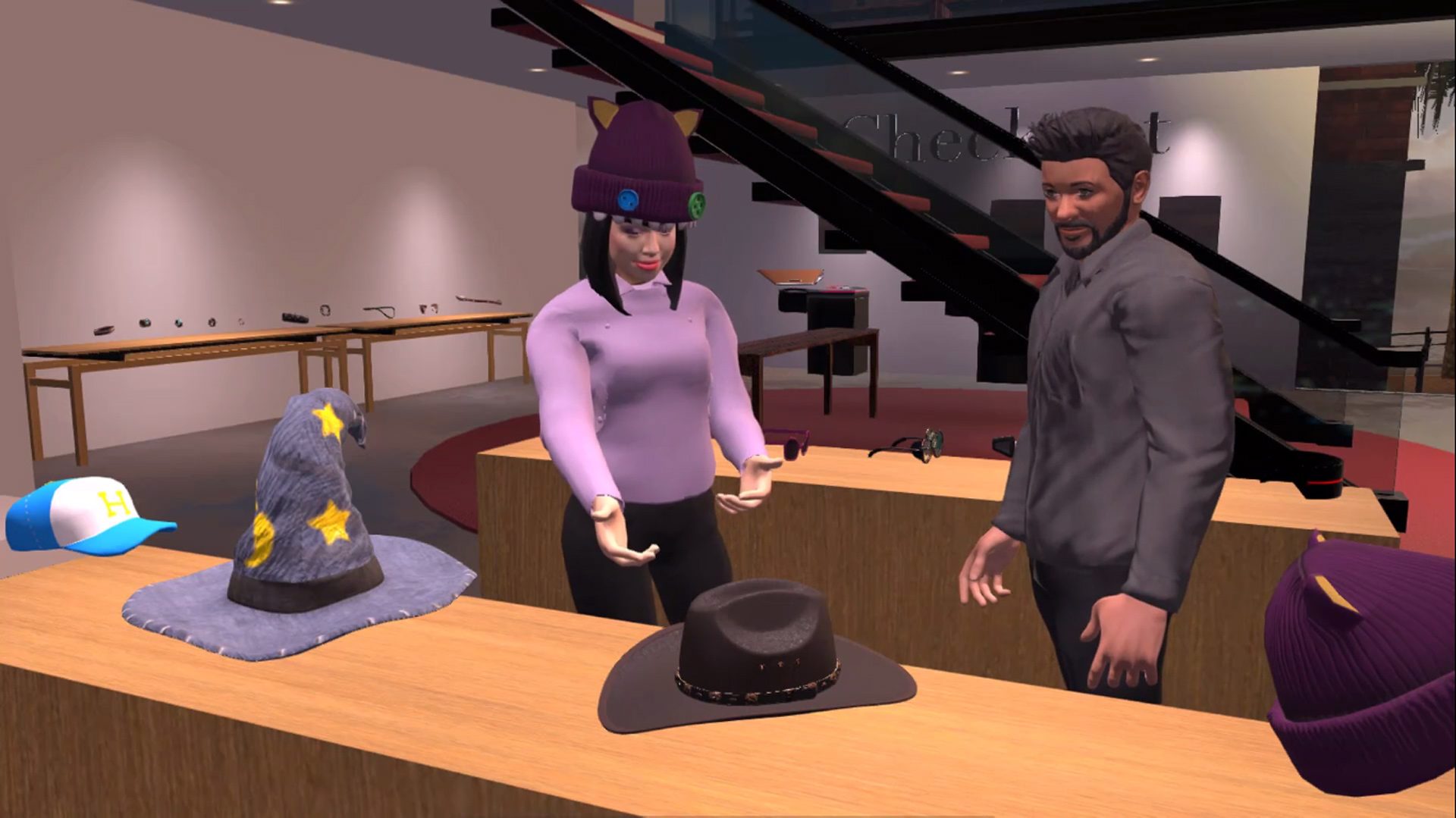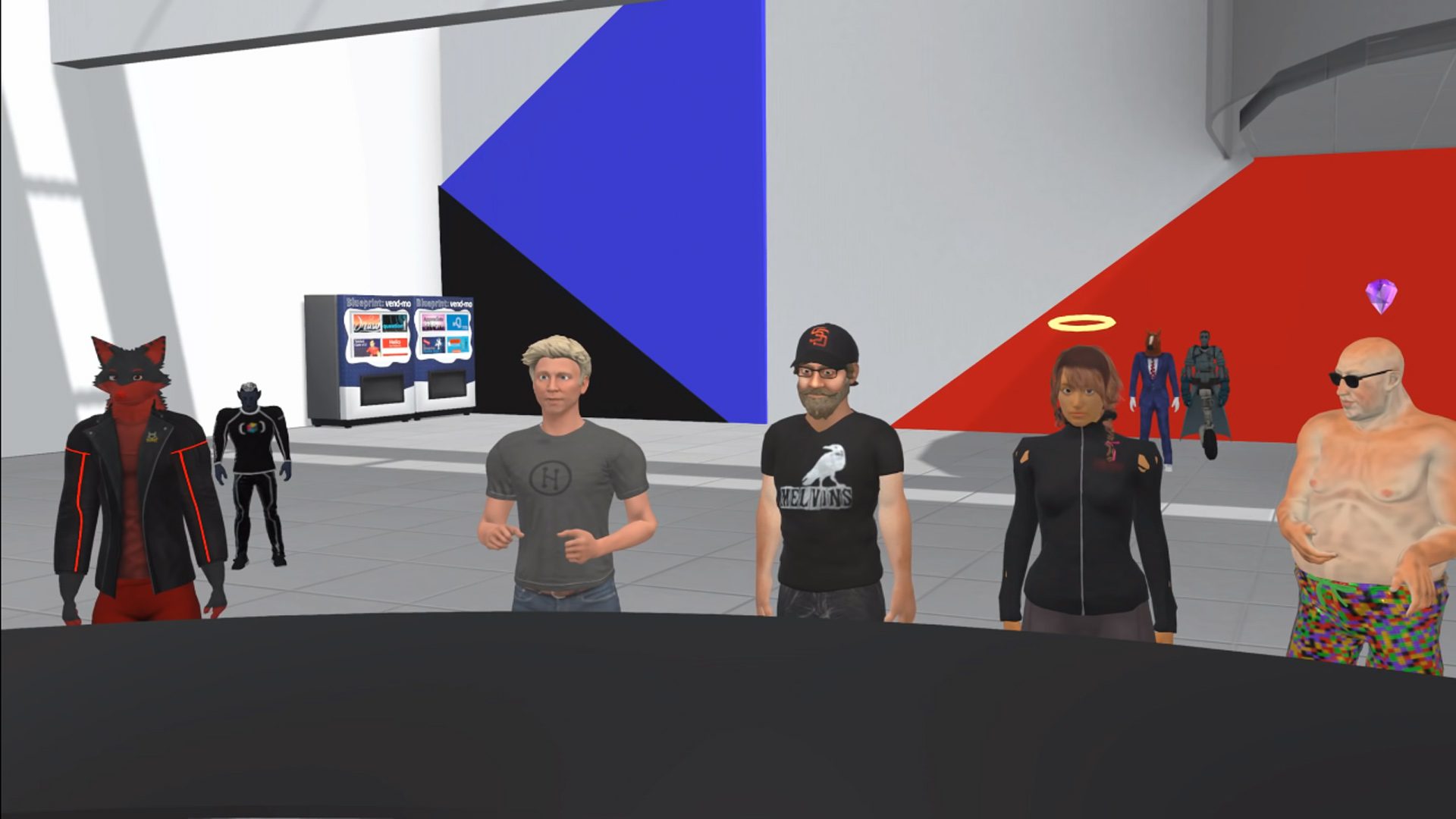
Philip Rosedale, CEO of High Fidelity and founder of Second Life, announced at a High Fidelity community meeting recently that the company will be scaling back their VR efforts, focusing more on improving their PC and Mac performance. The company has also shut down all first-party user spaces and associated servers except for a single orientation room, which will be used for new users only.
High Fidelity is still allowing individual users to run their own spaces/servers, although refocusing efforts to flush out its desktop client and encourage user-generated spaces undoubtedly comes as a cost-savings maneuver by the company.
As first reported by New World Notes, Rosedale’s reasoning behind the move comes down to a pretty big linchpin: VR headsets sales. They simply aren’t getting into enough hands to make the company profitable in its current form.
“One thing to do, which all the companies have been doing, is better support for desktop users. Because any assessment of the rate of progress on HMDs is a sobering one; they’re not selling enough to create a general-purpose community that is both interesting and profitable,” Rosedale said at the meeting. “So, it’s really important to recognize, that through no fault of our collective selves, it’s not working. This model is not working right now. The flat world, that is an open building environment, is not compelling enough as it stands right now for the number of HMDs that are out there to get lift off. And so we’ve gotta think hard about that.”
“We’re not a social VR game.”
We’ve typically described High Fidelity as a social VR platform, although according to Rosedale, that’s not entirely an accurate description.
“We’re not a social VR game. We’re actually not. This is not a chat application where we get together and hang in a room talking to each other. High Fidelity was designed to be a platform anticipating the very broad use of VR across the Internet for things like this—public meetings, going to work, going to school— doing all kinds of different things.”

Rosedale says that while they’ve done their best to get that aspect of their business started, the company feels it’s making a mistake by taking an active role in the community by supporting first-party spaces. This, he says, comes down to the company’s inability to manage ban lists and moderate users.
“What we feel like is we’re actively doing a disservice to everyone by running these public spaces. Instead, what we ought to have have is you guys running your own spaces, that each have a different character. I would imagine that there are five or six distinct groups of people already in this room who to a large extent already have pretty different rules to their standard and everything else.”
Reading between the lines somewhat: it’s apparent that hosting servers for a low concurrent user base hasn’t helped the company to see a return on their $73 million investment, the latest $35 million injection arriving in June 2018. Rosedale however has confidence in individual users to fill the void that its first-party servers will leave behind.
High Fidelity, Low Concurrents
To Rosedale, there’s at least one big barrier to getting the sort of concurrent user numbers it needs to to drive its in-world economy. Speaking to New World Notes, he says that social VR simply won’t work “until we can do everything in them, including work and messaging. We can’t multi-task in VR yet, and that’s a real challenge.”
While its still very much early days for VR in general, Rosedale contends that many social VR companies are facing the same issue with low concurrent users.
“Let’s actually add all [users from NeosVR, Anyland, and Rec Room] together into one product. That company will not survive. There’s not enough revenue,” he said at the community meeting. “Everybody here that’s having such a good time: you guys need to pay us $10,000 a month for us to keep the company going indefinitely into the future, for us to basically be a positive cash-flow company, as we say here in The Valley. And everybody else in VR right now is faced by that.”

Rosedale additionally said that bug fixing and other VR-specific improvements to the platform won’t be enough to get the company cash flow-even as long as VR headset adoption is low.
“There should be 15, 20, 50 people around the table right now making a living in here. And we’re not there yet. So we gotta figure that out,” he said.
High Fidelity notably created their own cryptocurrency and blockchain-based ledger system, the latter of which allows authentication of in-game items—seemingly the right ingredients to attract the sort of virtual business moguls and regular users that once populated Second Life. But High Fidelity isn’t Second Life, Rosedale says.
You guys, this is not Second Life in 2004. Second Life actually took off like a rocket once it got working. Even though it had tons and tons of problems—but it took off like an absolute rocket. And the reason that it did, I think, was that this experience of bringing a lot of people together and letting them build things together live, well, in the time frame when we built Second Life, it had never, ever been seen by anyone. It was the most exceptional, jaw-dropping thing that anybody had ever seen except in science fiction.
Rosedale attributes Second Life’s meteoric success due to the relative lack of similar platforms and services back in the early 2000s, something that’s changed quite a bit in the meantime.
“That doesn’t mean that we’re not going to make it. It simply means that we have to be more clever, and the strategy that we use to get people in here has to be somewhat different,” Rosedale says.
As for the industry’s most successful VR multi-user space, VRChat still boasts concurrent users in the thousands, according to Steam Charts. At the time of this writing, there are estimated to be around 3,000 players spread across multiple worlds within the platform. There’s no way of telling how many of those are using VR headsets, although its likely a majority are on desktop.
That said, VRChat can largely be considered a freak of nature, thanks in part to its wide-reaching success on social media and YouTube. Whatever the case, one important lesson to learn for the platform’s success is that low numbers are typically a self-fulling prophecy: if few users are online, people simply won’t stick around for long enough to generate the vibrant digital communities that so many are looking to inhabit. In this case, the contrapositive is true for VRChat, which only demonstrates the need for raw user numbers in a time when VR headsets are still a rarity.
When asked by New World Notes what he thought about the coming tide of new VR devices, specifically the standalone 6DOF headsets Quest and Vive Focus, Rosedale thinks they’re “the future,” although he posits VR is still going to take a few years to reach mass adoption. High Fidelity previously announced plans to support Quest back in February, although considering today’s news, Quest support may inevitably be placed on the backburner.
– – — – –
You can watch the full video of the community meeting below; Rosedale begins with his news announcement, and then opens the floor to community questions.
A special thanks goes out to Ryan Schultz for his work on creating a transcript of the meeting.
The post ‘High Fidelity’ Shifts Focus Towards Non-VR Due to Slow Growth appeared first on Road to VR.